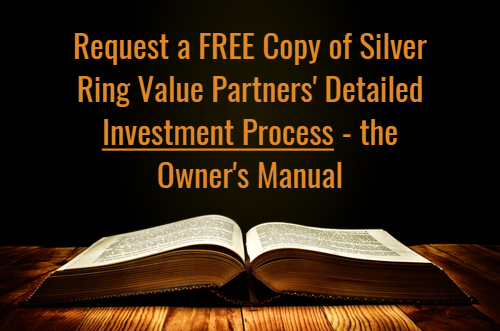5 Exemplary CEO Annual Letters Worth Reading
/What makes a great annual letter from the CEO to the shareholders? The typical, generic annual letter that I read adds little to the numbers and sometimes obfuscates more than it illuminates. The best letters go beyond the numbers and help shareholders get a deeper understanding of the company, how it is performing and the decision-making process the management team employs. In this article I examine the aspects of a great annual letter and provide five examples.
What a typical annual letter does:
Uses promotional language to highlight success and largely deemphasizes any shortfalls
Summarizes financial results readily available elsewhere without providing sufficient context
Talks about future goals and aspirations without also reviewing how performance thus far has measured up against past goals and aspirations
Focuses on the external environment as the source of problems with the business
Frequently leaves me feeling like I know less about what is really happening with the company than before I started reading it, and that I should just skip it and proceed to the form 10-K filing (for U.S. companies)
What a great annual letter does:
Treats readers as partners who would like to understand the business at a deeper level rather than as prospects to be marketed to
Addresses both what went right and what went wrong for the company
Reviews the relevant key performance metrics in the context of the company’s strategy and goals
Helps the readers understand the process that the management is using to make decisions to control what is within its ability to do so
Gives the shareholders insight into qualitative aspects of the company, such as its culture
Below are five letters that deserve to be called “great”. A terrific annual letter from the CEO does not in and of itself mean that the company is a great one or that the stock is a good investment. It does, however, quickly identify the CEO as more likely to be aligned with the shareholders and more likely to possess other desirable attributes, such as the appropriate balance between confidence and humility. In no particular order, here are five letters that hit the mark for me:
Cimpress (CMPR) 2017 Annual Letter
What makes this letter great:
Focuses investors on metrics that are important inputs into estimating intrinsic value
Reviews relevant metrics thoroughly over a long period of time
Explains the capital allocation philosophy and process
Helps investors understand organic investments currently affecting the P&L
Explains actions management is taking to execute its strategy
It is not promotional: the emphasis is on an objective assessment of results and on helping investors better understand the business
Constellation Software (CSU CN) 2017 Annual Letter
What makes this letter great:
Provides insight into the company’s culture
Explains the capital allocation philosophy and process
Reviews relevant metrics over a long period of time
Gives insight into how employees are being developed and how that helps the company’s decentralized strategy
Provides insight into what the company looks for in board members to help it succeed
Trupanion (TRUP) 2017 Annual Letter
What makes this letter great:
Focuses investors on metrics that are important inputs into estimating intrinsic value
Reviews relevant metrics thoroughly over a long period of time
Focuses on what has not gone well and what is being done about it
Explains the capital allocation philosophy and process
It is not promotional: the emphasis is on an objective assessment of results and to help investors better understand the business
Graco (GGG) 2016 Annual Letter
What makes this letter great:
Admits mistakes made, takes responsibility and highlights lessons learned
Helps investors better understand the company’s culture and how employees make decisions
Explains the capital allocation philosophy and process
O’Reilly Automotive 2008 Annual Letter
What makes this letter great:
Reinforces the company’s culture and strategy
Provides an in-depth deep-dive into a major acquisition and explains the integration approach and why this deal is consistent with the company’s strategy and culture
If you noticed that there is a good deal of overlap between what each letter does well, that is because these aspects are important components of a good letter. Notice also what is absent:
Discussions about the macro economic environment
Lofty financial targets not substantiated by past record or by details of how they will be achieved
Pontification about topics not relevant to what a thoughtful investor trying to estimate the intrinsic value of the business would be interested in
Regurgitation of headline financial statistics easily obtainable elsewhere without providing a meaningful explanation about what they mean and how they are relevant
I am sure there are many other good annual letters, and I do not mean to imply that the ones above are the only ones that are excellent. My goal was to give some concrete examples of annual letters that I thought stood out in a positive way. I hope that more CEOs over time stop writing the “standard” letter that fits a template perceived as safe from a public relations perspective. A CEO interested in writing a truly great letter will adopt a more authentic, in-depth communication style with their shareholders to help them better understand the business.
If you are interested in learning more about the investment process at Silver Ring Value Partners, you can request an Owner’s Manual here.




